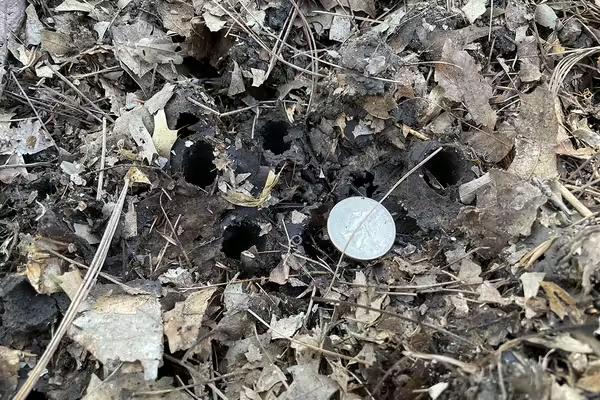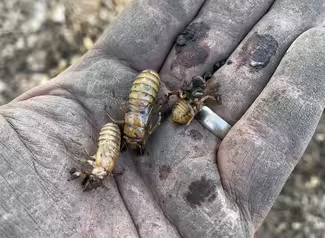
If you haven't heard the buzz, you will soon. Billions of periodical cicadas are coming, and University of Illinois Extension is sharing information to help track their moves before emergence.
“Historically speaking, 2024 is a big year for periodical cicadas in Illinois,” says Ken Johnson, Extension horticulture educator serving Calhoun, Cass, Greene, Morgan, and Scott counties.
Periodical cicada broods XIII and XIX will be emerging throughout much of the state at the same time. Although exact times and locations will be varied, there will be cicadas.
“The simultaneous emergence of these broods is the first time since 1803, and it will not happen again until 2245,” says Johnson. “It’s an exciting time for those who enjoy insects and natural phenomena.”
Although cicadas do not pose a threat to humans or pets, they will be heard. It may get loud depending on the geographic location and the number of cicadas around. According to the National Institutes of Health, calls of male cicadas can reach over 90 decibels, which is as loud as a lawnmower, motorcycle, or tractor.
Where Are the Cicadas Now?
Many people ask and wonder where the cicadas are before these billions arrive. The broods are underground, feeding and preparing to emerge when the conditions are right. What are they waiting on? Soil temperatures. Consistent soil temperature is one vital component to kicking off the massive emergence.
As of mid-April, Johnson reports that periodical cicadas have begun digging holes in the soil in Jacksonville, located in central Illinois. While miles away in North and South Carolina, there are current reports of cicadas beginning to emerge.
“Periodical cicadas will begin digging holes to the surface a few weeks before they emerge from the ground,” says Johnson. “They'll wait underground until soil temperatures, 7 to 8 inches deep, reach 64 degrees Fahrenheit, at which point, they'll emerge and molt into adults.”
Are you looking to track the cicada soil conditions near you? University of Illinois State Water Survey at the Prairie Research Institute’s Water and Atmospheric Resources Monitoring Program, WARM, has a soil temperature tool that is searchable by location and available by creating a free account. The tool tracks temperatures typically used for farming, gardening, and now Cicada Watch 2024.
For more on cicadas and what to expect when they emerge throughout Illinois in May and June, visit extension.illinois.edu/insects/cicadas. Download Extension’s Cicada Broods infosheet, which is available at go.illinois.edu/Cicadas24.
SOURCE/WRITER: Ken Johnson, horticulture educator, Illinois Extension
WRITER/EDITOR: Jenna Braasch, media communications coordinator, Illinois Extension
Illinois Extension leads public outreach for University of Illinois by translating research into action plans that allow Illinois families, businesses, and community leaders to solve problems, make informed decisions, and adapt to changes and opportunities. Illinois Extension is part of the University of Illinois Urbana-Champaign College of Agricultural, Consumer and Environmental Sciences.


